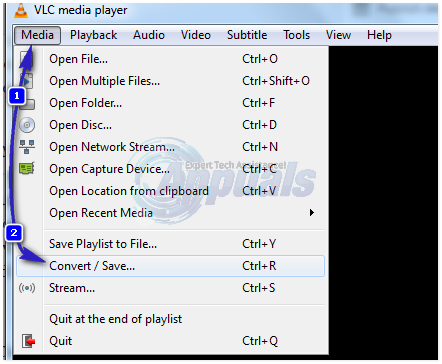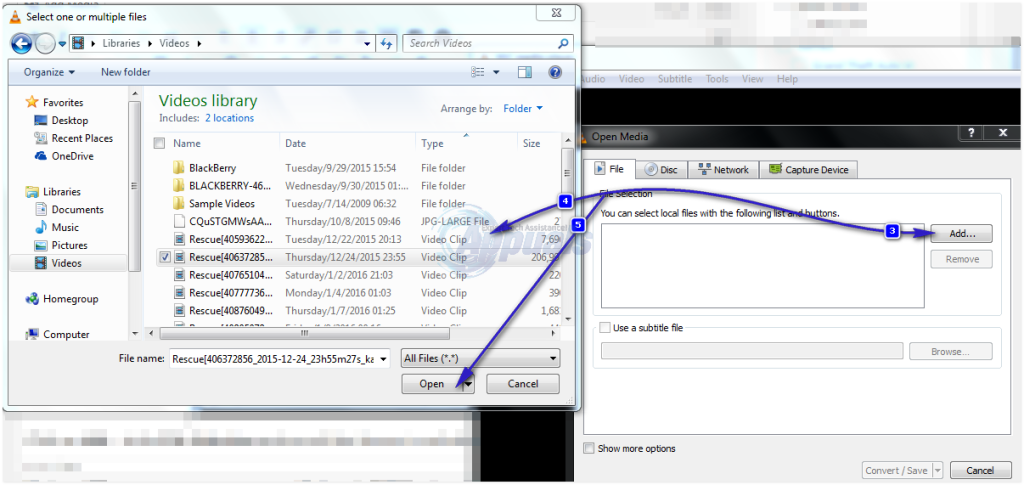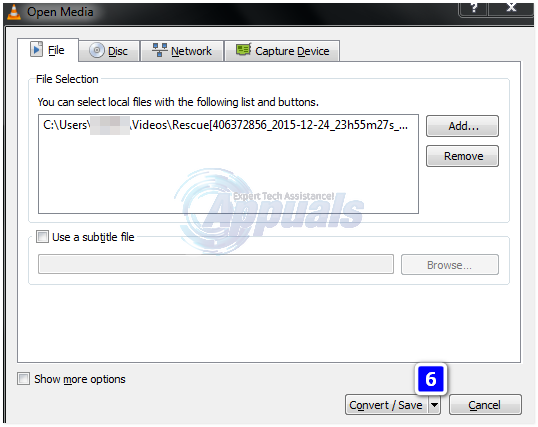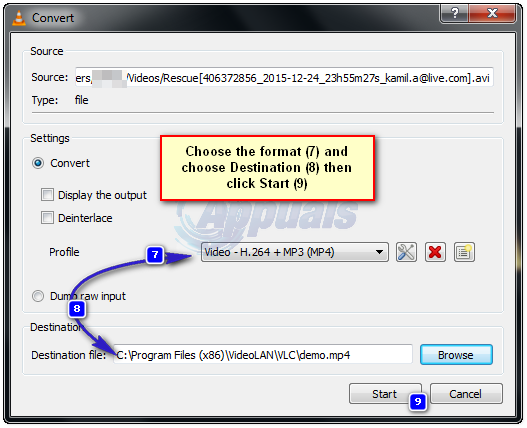One of the most important things – other than playing videos – that VLC Media Player can be used for is converting videos from one video format to the other. What makes VLC Media Player so great at being a video converter is the fact that it not only gets the job done but also supports the conversion of just as many video formats as it does playback. As good as VLC Media Player may be at converting videos from one format to the other, not many people know about this extremely useful little feature of VLC Media Player, and even less people know how to make appropriate use of it. To convert a video using VLC Media Player, you need to: Launch VLC Media Player. Click on Media in the toolbar at the top of the video player and Click on Convert / Save… in the contextual menu or Hold CTRL and press R.
Click on Add… in the File Selection section and then browse to and select the video file that you want to convert. You can also repeat this step as many times as you like as VLC Media Player also supports the conversion of multiple video files at the same time.
Open the dropdown menu at the bottom of the Open Media window and click on Convert. Alternatively, you can press Alt + O.
Click on Browse in the Destination section and browse to the directory where you want the converted video to be saved. Also name the converted file in the Destination file field in the same section. Open the dropdown menu before Profile to select the video format you want the video converted into. VLC Media Player supports conversion into MPEG, MP4, AVI, DivX, WMV, ASF and many other video formats.
The player also has preset video format profiles for a horde of different mobile devices such as Android devices and iPhones for you to choose from. For those of you who really like to geek out on video conversion, there are also different format profiles for different resolutions, codecs and frame rates. To go even deeper into the video and tweak out even the slightest of details, click on the wrench and screwdriver button immediately right of the dropdown menu, allowing you to tweak out the video format profile as much as you want, even going as far as to use video filters and optimize the video and audio track in a variety of different ways. Once you are done fine-tuning the specifications that the converted vide file will have, click on Start to allow VLC Media Player to begin the conversion. The converted file will be saved to the directory that you specified in the Destination file The amount of time that the conversion will take will depend on the length of the video being converted, the specifications of your video format profile and the specifications of your computer. You can see the progress of the conversion in VLC Media Player’s timeline.
How to Convert MP4 to MP3 Using Windows Media PlayerFix: Cannot Open File for Writing’ with VLC Media PlayerHow To Fix VLC Media Player Crashes when Playing .MKV FilesHow to Record Your Webcam with VLC Media Player?



